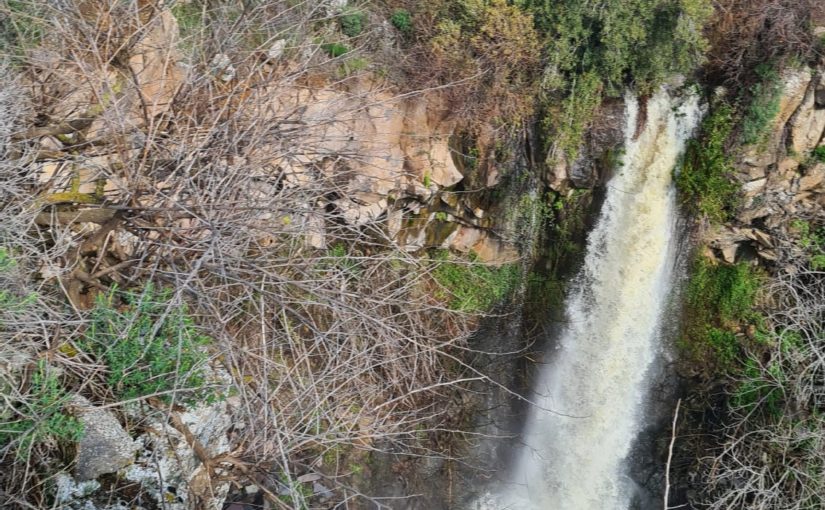Hi,
We decided to enjoy the Elpis storm snow leftovers on Golan Heights (like so many other Israelis) and had a stop on Ayit waterfall (Eagle Waterfall).
We were supposed to visit relatives but they just been confirmed positive. So we eating Atzva pear pie ![]()
![]() all be ourselves.
all be ourselves.
So we headed North in heavy traffic on Golan Heights narrow roads, that became even narrower when we got to the snowed area – as people were parking along both sides of the road.
We tried to climb Mount Brown (not sure if it named after you, but it is part of Golan heights volcanos) But realized it is mined and we had cross a stream to get to it.
We finally stopped at Palsar 7 memorial (Reconnaissance company of 7th Armored Brigade of IDF, it is my little brother Guri unit that have been deassembeld lately). There was enough snow to play in ❄️
Take care
Gad
P.S.
We would have been probably sleep in Har Adar with Saba and Sabta and enjoy the snow, but they had avoided seeing us in the past week as to not go Omicron and missing their trip to… Egypt! (that have been postponed couple of times for the Coronavirus).
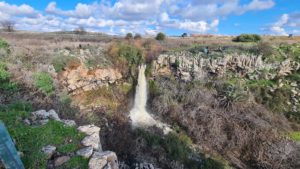
Ayit waterfall
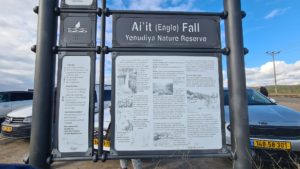
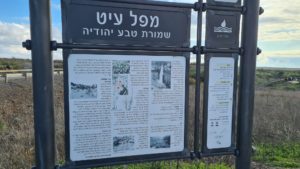
Ayit waterfall sign – The waterfall is part of Yehudia Forest Nature reserve, the Ayit strea is on the Yehudia river many tributaries. Those start as slow stream and then drop suddenly to deep canyons with impressive waterfalls. Ayit waterfall flows after heavy rains. It is the only time the Cyclamens and daffodils flowers bloom around.
The waterfall is one of the impressive in Golan Heights, and followed by a 4km canyon.
The lookout porch allows great view of the canyon , as well as of hr basalt pillars in the cliff face.
While cyclamen, daffodils and almond trees blooms here in the winter, the spring flowers include the yellow bushes of Jerusalem spurge, the green stalks of the asphodel (onionweed), and the low red patches of Turban buttercap.
The hexagonal basalt pillars are a unique geological phenomenon. Their special shape is due to the rate of the lava’s coolin gas it pored out of the earth. As the lava flowed on ths ground, the upper level cooled and shrank, while the core was still burning hot and moving. The difference in temperature between the outer part and the inner part of the lava flow caused cracking of the outer layer. These cracks developed formed into six-sided pillars (usually six, but sometimes five or seven). Lava tends to form into the ahape that requires the least amount of energy, with little movement as possible, and hexagons are most “economical” shape in nature (i.ie. beehives, snowflakes, salt crystals, etc.).
A short hiking route for familes (1.5km long) start here. The route is an easy and circular, approximate 30 minutes long.
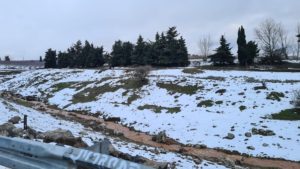
Snow! on the sides of the road
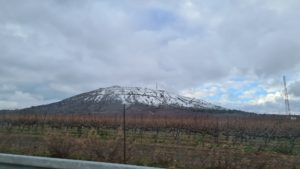
Snowed Avital mountain (part of Golan Heights Volcanos)
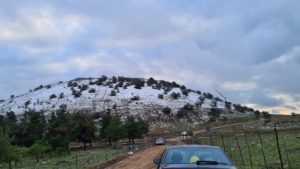
Snowed Brown mountain (also part of Golan Heights Volcanos). See the person in the middle? So the yellow sign on bottom – it warns from landmine danger….
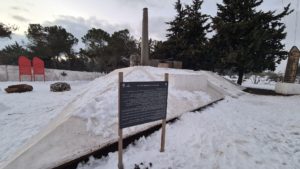
Palsar 7 memorial covered with snow
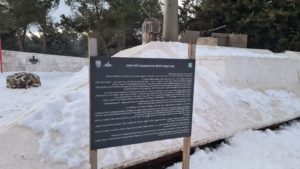
Palsar 7 Reconnaissance company of 7th Armored Brigade of IDF, fallen soldier memorial.
The unit was set on November 7th, 1948.
Between 1952-55 the unit operated along Israel South borders and participated in the Reprisal operations.
In Sinai War (1956) it have been operated under 7th Armored Brigade. Its main mission was to locate Dayka crossing (a mountain cross between Jabel Hillel and Jabel Dalfa in Sinai) and lead the brigade west Abu-Agila armored area and attack it from the back (west to east). The unit had great successes in its mission and allowed IDF forces to surprise the Egyptians, destroy the fortified areas and by that set the results of the war. After the war it had been marked for Citation by the Commander of the South front, Aluf Haim Laskov.
In Six Day War (1967), 7th Armored Brigade was the the only non-reserve armored brigade and led IDF armored forces in war. Along over 220km the brigade beaked in Khan Yunis, captured Rafah fortified area and crossed Sinai desert up to Suez Canal (It was the first force to get there along with the paratropers brigade that get to El-Qantara). During the combats 16 of the brigade soldiers and commanders had lost their life and many other had injured. 11 soldiers and commanders had got citations, some after their death. Palsar 7 in Six day war was the company was the most decorated unit in one war.
In Yum Kippur War (1973) here, east to the memorial (south of Boqata and up till Hermonit mount on the east) the company had fought in the third day of the war against Syrian Commando units that have been landed the night before in order to hit and collapse 7th brigade line of defense and by that the entire IDF line of defense. It was the hardest and important day in which the Syrians have gathered many forces to achieve the above target. The company had been ordered by the brigade company to stop and destroy the Syrian commando. A mission in which it had been succeeded in short range fights. The cost was have: 24 fallen and 25 injured to which the memorial was built for by the fallen friends in arms. Two days after the heroic fight, the brigade had break in the Syrian defense line up till Damascus and collapse the Syrian army.
The company was rebuilt on the 1980s and from that time it is an elite force that its target is to to the brigade “pillar of fire to give them light, so that they could travel by day or night” (Exadus 13)
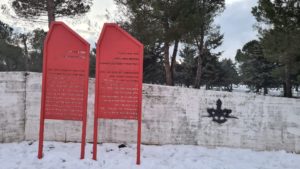
On the wall the unit symbol.
On the right sign – the unit fallen soldiers in Six Day War and till Yum Kippur war.
On the left sign – the unit fallen soldier in Yum Kippur war
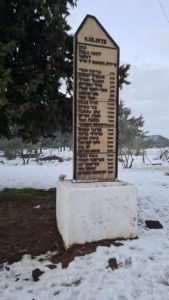
The unit fallen soldier in Yum Kippur war.

